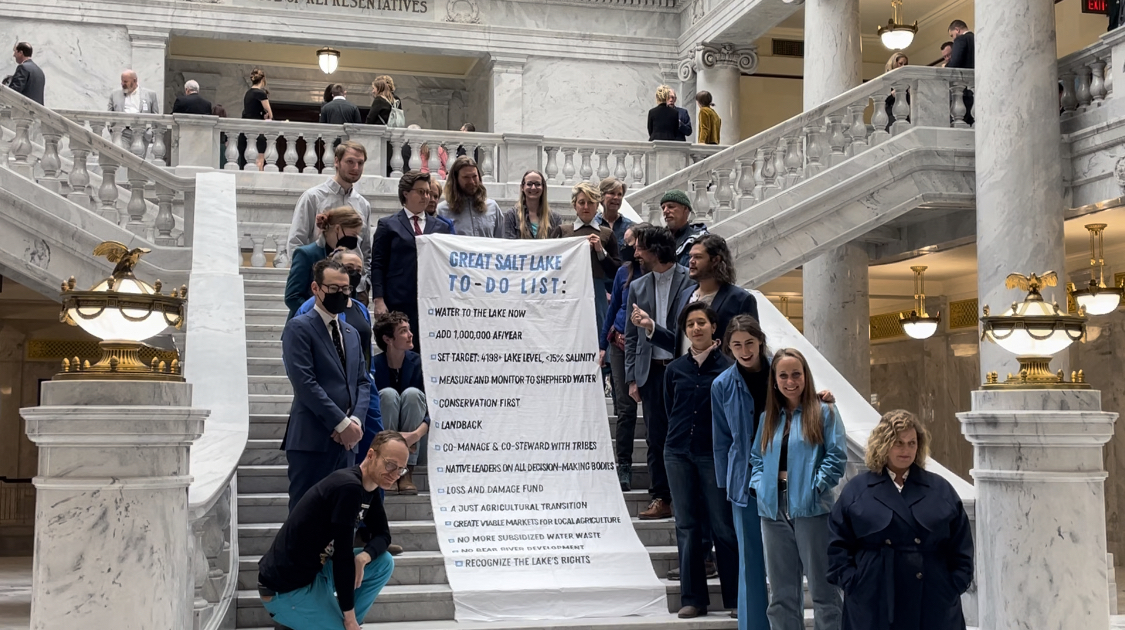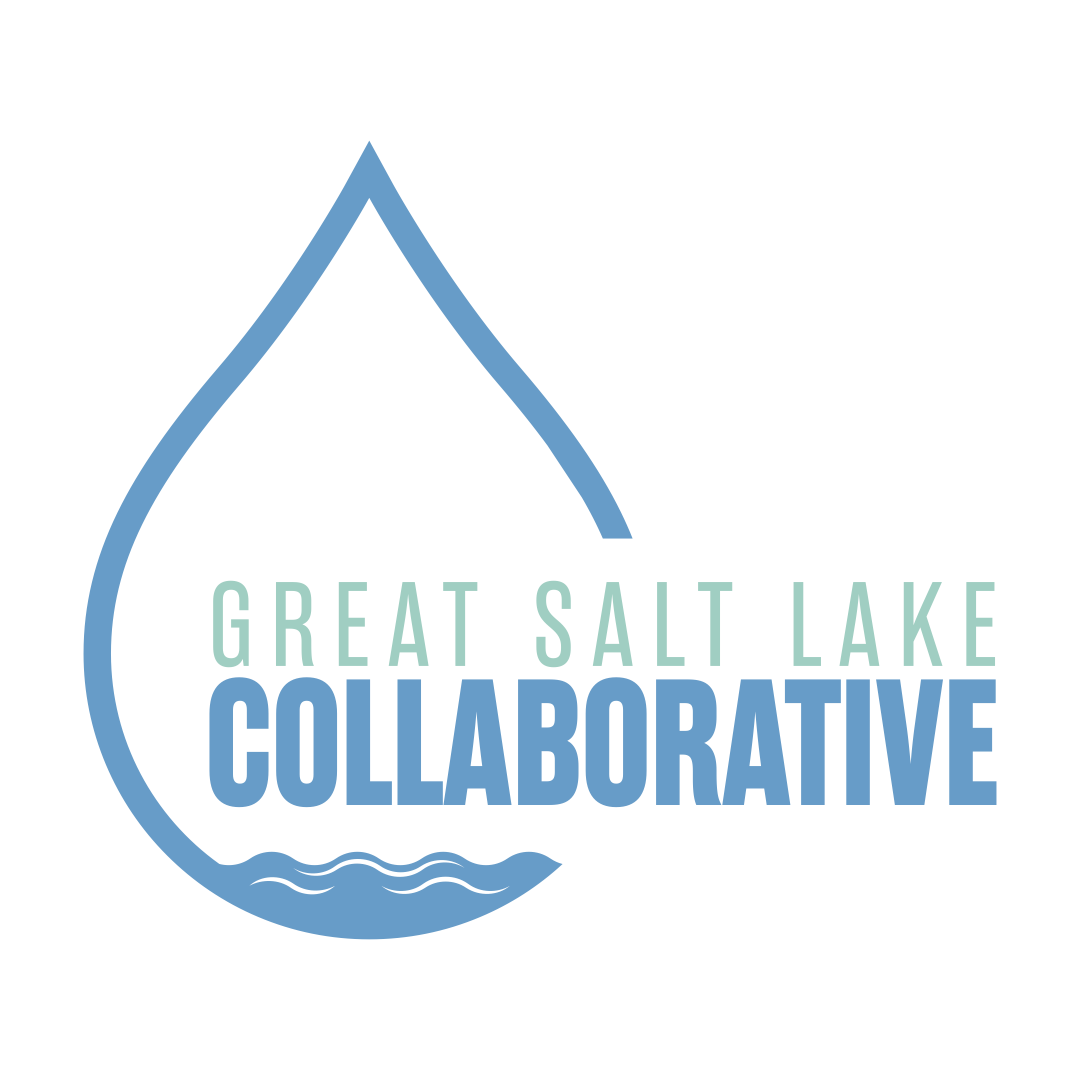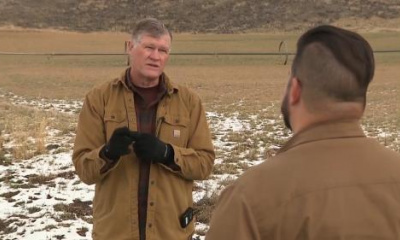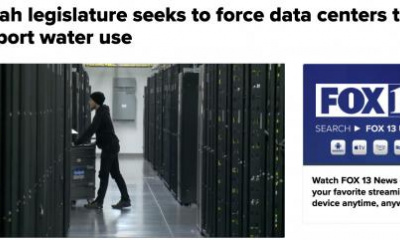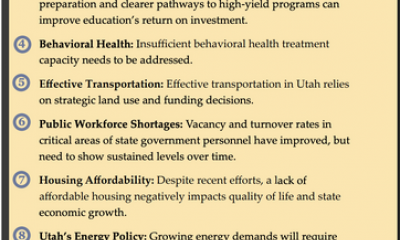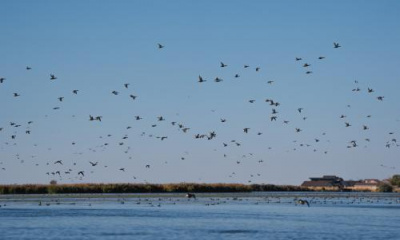As the 2023 legislative session draws to a close, community activists gathered at the Capitol Wednesday to call for emergency action for the dying Great Salt Lake.
Unfurling a 10-foot banner dictating a “Great Salt Lake To-Do List,” approximately 20 people organized by the group Save Our Great Salt Lake stood on the steps outside the House chamber and demanded action.
“We are losing the lake on your watch because you are not watching close enough,” said Nan Seymour, a poet and activist who has been hosting vigils on Antelope Island for the lake throughout the legislative session.
“Though the window of possibility is closing, it is not yet closed,” she said. “Everything we do matters, and now is the time.”
The activists fear water won’t get to the Great Salt Lake in time to prevent an ecological disaster.
“The reality is that over and over in the legislative session, [legislators] had many opportunities which they failed to take action on,” activist Luis Miranda said. He cited measures including a failed resolution calling for a target lake elevation. Another bill that would have diverted about $65 million a year from Lake Powell and Bear River development projects to acquire water rights for Great Salt Lake, was never debated.
“Now we’re two days away from the end of the 2023 Utah State legislative session and nothing of significance is happening,” Miranda said. “In the meantime, the Great Salt Lake is dying.”
Sen. Scott Sandall, R-Tremonton, responded to the complaints, telling FOX 13 News, he expects water will get to the lake in the short-term. “It’s not our intention to lose our ecology.”
Lawmakers’ budget priorities include $200 million to reduce water use in agriculture, $15 million to meter untreated water (which leads to conservation) and $3 million for a conservation education campaign. They’re also passing several bills to incentivize the replacement of thirsty turf for water-wise landscaping.
"We’ve made long-term solutions our basis," Sandall told FOX 13 News. "That’s what we’re doing with ag water optimization, that’s what we’re doing with our conservation plans, these are plans that will be meaningful year after year after year and we will make a difference going forward."
However, language that would have required conserved water to get to the lake was removed from a bill because water districts want to keep saved water for future growth.
"We were unable to get the piece where that water gets moved to the lake," Rep. Doug Owens, D-Millcreek, who sponsored the altered legislation, told FOX 13 News. "We are going to ask for that to be voluntary this year, and it’s going to be mandatory soon."
As co-chair of the Great Salt Lake Caucus, Owens acknowledged: "It’s hard to know if we’re doing enough but we are doing a lot to help the lake."
Back at the rally, activists were looking for action. “Saving water is one thing, making sure it gets to the Great Salt Lake is another,” Alex Veillieux, member of Save Our Great Salt Lake, said
Save our Great Salt Lake’s to-do list includes:
- Water to the lake now
- Add 1,000,000 acre-feet of water a year
- Set target: 4198+ feet lake level, <15% salinity
- Measure and monitor to shepherd water to the lake
- Conservation first
- Co-Manage & Co-steward with tribes
- Native Leaders on all decision-making bodies
- Loss and damage fund to compensate people impacted by dust and economic loss
- A just agricultural transition from alfalfa farming
- Create viable markets for local agriculture
- No more subsidized water waste
- No Bear River development
- Recognize the lake’s rights
Olivia Juarez, public lands director for community group GreenLatinos, emphasized how important it is to “integrate tribal co-management and co-stewardship” into decision making regarding the Great Salt Lake.
“Currently all the boards, all the committees lack tribal leaders, which is wrong,” they said.
Juarez explained how marginalized community members — including those that are disabled, elderly, unhoused, and from the west side of Salt Lake City, which houses a predominant population of people of color and low-income residents — will be disproportionately exposed to the toxic pollutants that will come from the drying lake bed.
“Until today, the state has treated GSL and her peoples like they are disposable. Now is the time to assert that community and ecosystem are interdependent,” they said.
Utah farmer Madeleine Bavley brought agriculture into the conversation, saying that “it’s not a question of sustaining agriculture or saving the Great Salt Lake. We must do both.”
She described the need to replace current, “thirsty crops” with crops that are more suitable for desert environments.
“We must support a transition to agricultural practices that allow more water to make it to the Great Salt Lake,” she said.

